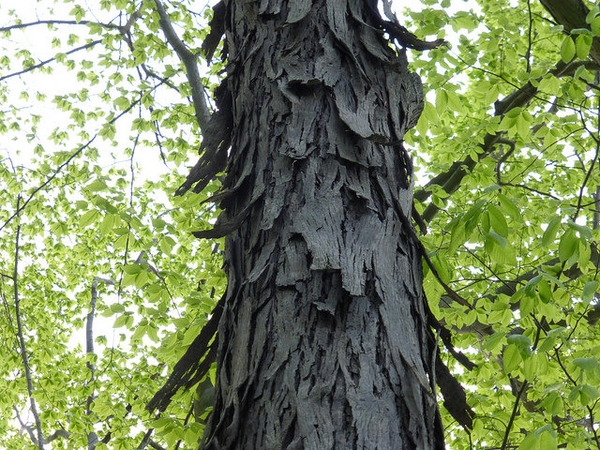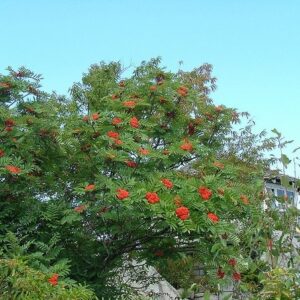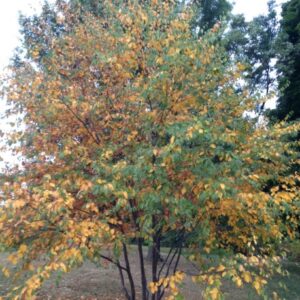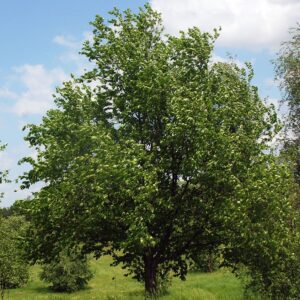Description
Shagbark Hickory Tree – 1 Yr Old Seedling
Overview
Shagbark Hickory (Carya ovata) is a slow-growing deciduous tree famous for its unique, peeling bark that creates an attractive, shaggy appearance. The tree produces edible nuts that are a favorite among wildlife, including squirrels and birds. In the fall, Shagbark Hickory displays beautiful golden-yellow leaves, adding color and interest to the landscape. This 1-year-old seedling is a great choice for those seeking a long-lived tree with ecological benefits, unique texture, and seasonal beauty.
Shagbark Hickory Native Range
Shagbark Hickory is native to North America and can be found throughout the eastern United States and parts of Canada. It typically grows in forests, woodlands, and along riverbanks in areas with well-drained soils.
Growth and Form
- Height: Grows approximately 12–18 inches per year, reaching 60–80 feet at maturity.
- Spread: Mature trees have a canopy spread of 30–40 feet.
- Growth Rate: Slow to moderate, making it ideal for long-term landscapes.
- Foliage: Dark green, pinnately compound leaves that turn a golden yellow in fall.
- Bark: The tree’s most distinctive feature, the bark, peels off in long strips, giving it a shaggy appearance.
- Nuts: Produces edible nuts, encased in a hard shell, that ripen in the fall.
Ecological Benefits
- Wildlife Habitat: The nuts are an important food source for squirrels, chipmunks, and birds, and the tree provides shelter for a variety of animals.
- Shade and Cooling: Shagbark Hickory’s large canopy offers excellent shade, ideal for cooling areas in summer.
- Soil Health: Fallen leaves help enrich the soil, promoting a healthy environment for surrounding plant life.
Shagbark Hickory Hardiness and Climate Tolerance
- Hardiness Zones: 4–8, making it suitable for a variety of climates, from cold northern areas to more temperate regions.
- Cold Tolerance: Can withstand cold temperatures down to -30°F (-34°C), making it ideal for harsh winter climates.
- Drought Tolerance: Once established, Shagbark Hickory is relatively drought-tolerant, though regular watering is beneficial in the first few years.
- Soil Preferences: Prefers deep, well-drained, fertile soils but can adapt to a variety of soil types, including sandy, loamy, and even slightly acidic soils.
Planting and Care
- Planting Location: Prefers full sun to partial shade. Make sure there is enough space for its eventual size, and avoid planting in areas with poor air circulation.
- Watering: Water regularly during dry spells, especially during the early stages of growth. Once established, the tree requires less frequent watering.
- Fertilization: Fertilize with a balanced, slow-release fertilizer during the early growth period to promote healthy development.
- Pruning: Minimal pruning is needed. Remove dead or damaged branches in late winter or early spring to maintain the tree’s structure.
Uses
- Timber: The wood is strong, dense, and durable, making it highly prized for furniture, flooring, and tool handles.
- Nuts: Shagbark Hickory produces delicious, edible nuts that are used in cooking or enjoyed by wildlife.
- Shade and Landscaping: It is an excellent choice for creating shade, especially in larger landscapes, and is valued for its unique bark texture and seasonal beauty.
Potential Problems
- Pests and Diseases: Shagbark Hickory may be susceptible to pests like aphids and hickory aphids, and diseases such as leaf spot and cankers. Regular monitoring can help reduce risk.
- Slow Growth: Due to its slow growth rate, it may take some time to reach full size and maturity.
- Root Competition: Avoid planting too close to other trees, as Shagbark Hickory has an extensive root system that competes for nutrients and space.







Reviews
There are no reviews yet.